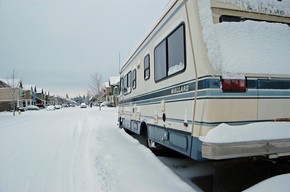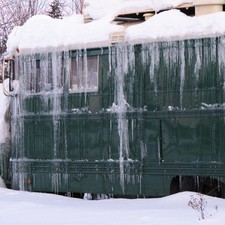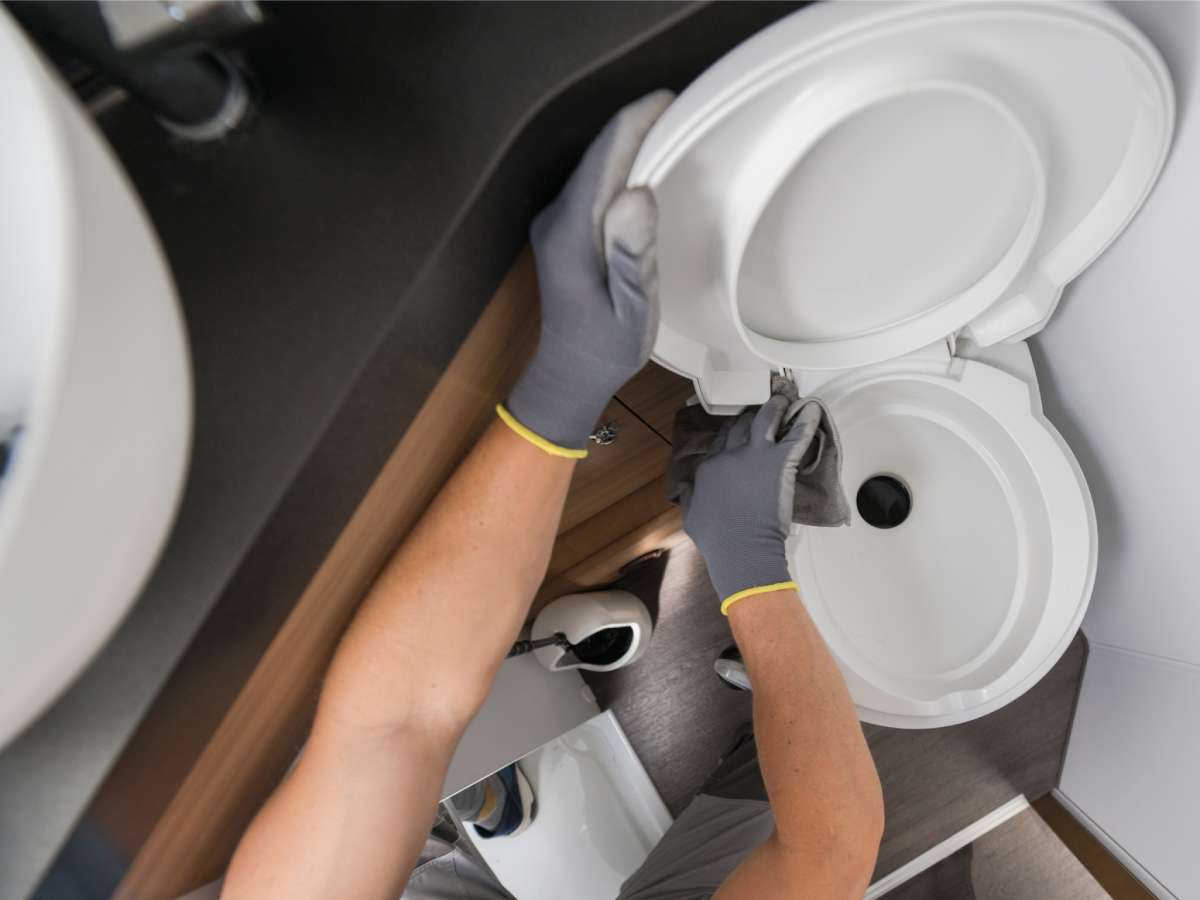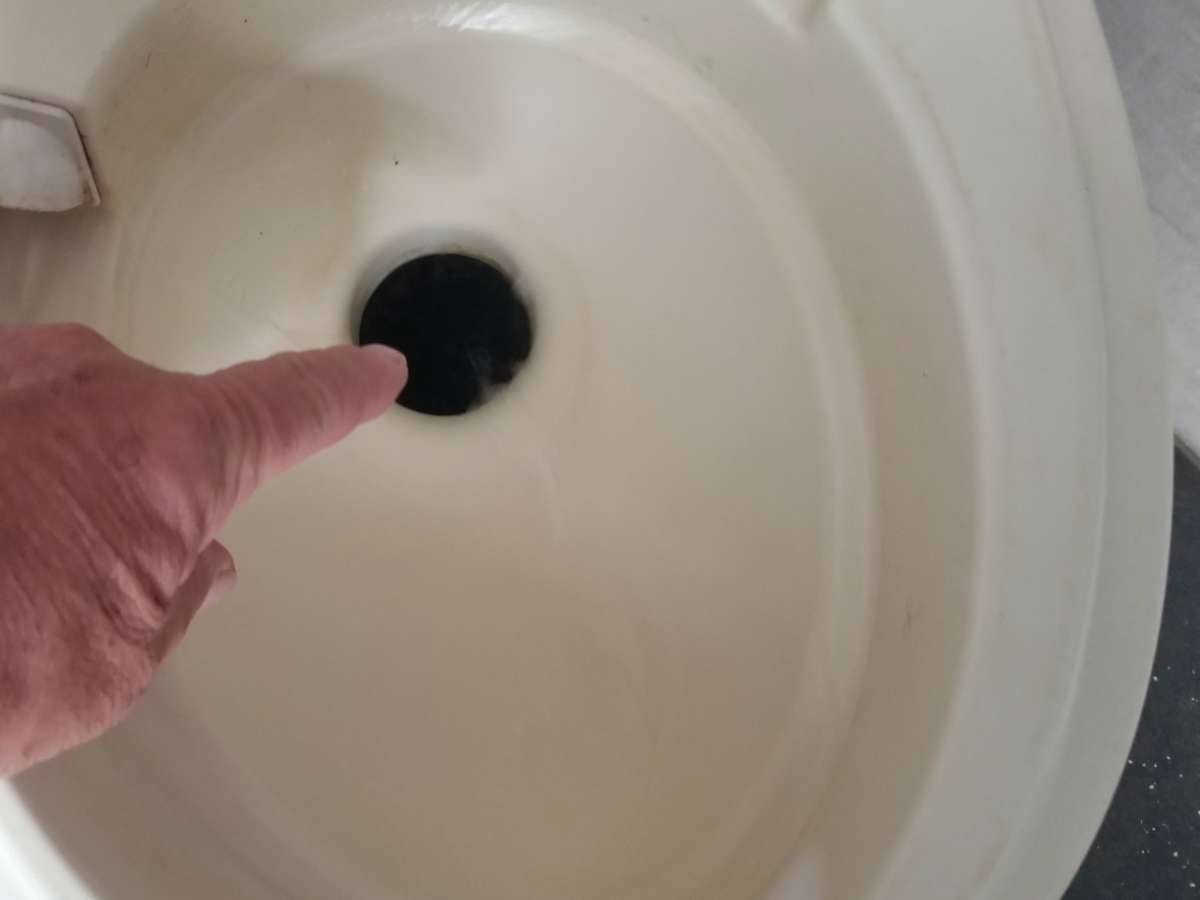 If your RV is parked for the winter, then it may be the last thing on your mind right now — especially if it’s buried in snow at the moment! It will be months before it sees sunlight again, right?
If your RV is parked for the winter, then it may be the last thing on your mind right now — especially if it’s buried in snow at the moment! It will be months before it sees sunlight again, right?
Even though you may be more concerned about keeping warm at home and tossing logs on the fire at this time of year, you should know that all the snow that’s accumulating on your RV can easily do some serious damage.
With economy being a high priority today, many RVs are constructed very lightweight. One of the areas where manufacturers can save some weight is the roof. In fact, a lot of the travel trailers built now are constructed with thin enough material that simply walking on the roof requires laying down some plywood to spread the weight, in order to prevent damaging the sheeting under the rubber membrane.
Imagine how much weight is involved when wet slushy snow is allowed to build up on this same roof about 12″ to 18″ deep. With the levels of precipitation that have been falling this winter, you can see this amount after just a few weeks of snowfall. Something you can hardly afford to overlook.
The Wrath Of Snow
Any amount of snow beyond a few inches is enough to cause serious damage.
As Spring gets closer, the melting and refreezing cycle will let water creep into all kinds of little places. When it freezes and expands, any “slightly leaking” seams will turn into major entry points for water. Soon, the insulation will be saturated and water stains will start appearing on the ceiling.
If the extreme weight of the heavy snow isn’t enough to outright collapse the roof, the water seeping in will quickly do damage amounting to many thousands of dollars.
Unfortunately, the damage often remains hidden, and once the stain on the ceiling dries out you may think you’re good to go. However, water that will remain trapped in the insulation can quickly start the process of dry rot, de-lamination, or worst of all mold. All of that can easily de-value your RV by a very large percentage.
How To Remove Snow From The Roof
 Removing snow and ice is also a tricky process.
Removing snow and ice is also a tricky process.
Leave your large aluminum snow scoop in the garage. Rubber membrane roofs can tear if the corner of a metal shovel catches while you’re shoveling off the snow. A plastic shovel is much less likely to catch and tear your RV’s rubber roof.
Concentrate on removing the snow, but leave any ice buildup alone. By breaking up ice, you will also disturb the seam sealer that is preventing leaks at any seams or joints. Once the ice is exposed to sunlight, it will melt and run off on its own. Using a hammer to break it up will cause more harm than good.
Melting Snow Leads To Water Damage
Surprisingly, the heavy layer of snow acts like a super insulation. The layers close to the roof can melt and remain slushy, while the top of the snow is still nice and fluffy. This isn’t as pronounced in an unheated RV, but as the sun climbs higher in the sky in early Spring you can still be faced with water under the snow.
If you remove the heavy layer of snow, the ice will quickly disappear.
Of course, there is one easy way to avoid all this snow removal inconvenience.
Before the snow season arrives, fire up the motorhome, or hitch up that trailer and point the front bumper south. Be sure to head out early — plenty of other snowbirds will have the same idea.
The last time I checked Tucson or Tallahassee, they both remained snow free all winter!





